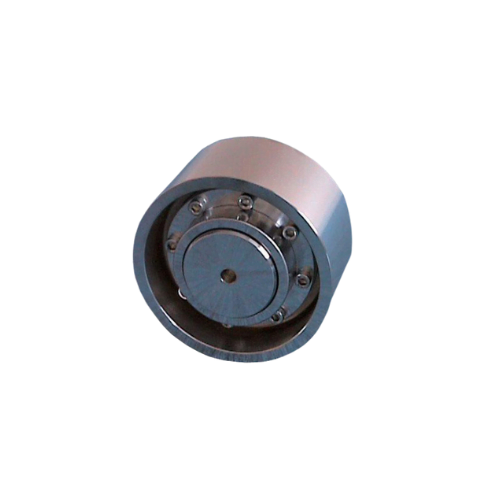Resilient Coupling: Enhancing Machinery Performance and Reliability
In the realm of engineering, achieving optimal performance and reliability is a constant pursuit. One pivotal component that significantly contributes to these goals is resilient coupling. But what precisely does resilient coupling entail, and why is it crucial in various industries? In this article, we delve into the concept of resilient coupling, its applications, advantages, and future trends.
Introduction to Resilient Coupling
Defining Resilient Coupling
Resilient coupling refers to a mechanical device designed to connect two shafts while accommodating a certain degree of misalignment, shock absorption, and vibration isolation.
Importance of Resilient Coupling in Engineering
In engineering systems, resilience is paramount. Resilient coupling ensures that machinery can withstand dynamic loads, environmental factors, and operational challenges, ultimately enhancing overall system performance and longevity.
Understanding Resilience in Engineering Systems
Characteristics of Resilience
Resilience in engineering systems encompasses the ability to adapt, recover, and maintain functionality under varying conditions. It involves robustness, flexibility, and efficiency.
Applications of Resilience in Various Industries
Resilience finds applications across diverse industries, including manufacturing, transportation, energy, and aerospace. From heavy-duty machinery to precision instruments, resilient components play a vital role in ensuring operational reliability.
What is Resilient Coupling?
Definition and Functionality
Resilient coupling acts as a flexible link between rotating shafts, accommodating misalignment caused by factors such as thermal expansion, shaft deflection, or structural settling. It provides a cushioning effect, reducing the transmission of shocks and vibrations between connected components.
Types of Resilient Couplings
There are several types of resilient couplings available, including elastomeric couplings, gear couplings, and diaphragm couplings, each tailored to specific applications and performance requirements.
Advantages of Resilient Coupling
Enhanced Shock Absorption
Resilient couplings absorb and dissipate shock loads, preventing damage to connected machinery and minimizing downtime due to maintenance and repairs.
Reduced Vibration Transmission
By isolating vibrations originating from rotating equipment, resilient couplings help maintain a quieter and smoother operation, improving overall workplace safety and comfort.
Improved Machinery Lifespan
The ability of resilient couplings to mitigate stress and fatigue on mechanical components extends the lifespan of machinery, reducing the need for frequent replacements and costly downtime.
Applications of Resilient Coupling
Resilient couplings find widespread applications across various industries, including:
- Industrial Machinery: Used in pumps, compressors, conveyors, and other heavy-duty equipment.
- Automotive Industry: Employed in vehicle drivetrains, steering systems, and engine assemblies.
- Power Generation Systems: Integrated into turbines, generators, and gearboxes to ensure reliable power transmission.
Factors to Consider When Choosing Resilient Couplings
Load Capacity
Selecting a resilient coupling with adequate load capacity is crucial to prevent premature wear and failure under operational conditions.
Misalignment Tolerance
Consider the expected misalignment angles and shaft deflections to choose a coupling that can accommodate such deviations without compromising performance.
Environmental Conditions
Evaluate factors like temperature extremes, moisture levels, and exposure to chemicals to select a coupling material that can withstand the intended operating environment.
Installation and Maintenance Tips
Proper Installation Techniques
Follow manufacturer guidelines and recommendations to ensure correct alignment, torque settings, and coupling assembly, minimizing the risk of premature failure.
Routine Maintenance Practices
Implement a proactive maintenance schedule, including regular inspections, lubrication, and replacement of worn components, to maximize the longevity and reliability of resilient couplings.
Case Studies of Successful Implementation
Explore real-world examples where resilient couplings have contributed to improved machinery performance, reduced downtime, and enhanced operational efficiency across various industries.
Future Trends in Resilient Coupling Technology
Innovations and Advancements
Stay updated on emerging technologies such as smart couplings, advanced materials, and predictive maintenance solutions, which promise to further enhance the resilience and performance of coupling systems.
Potential Impact on Various Industries
Anticipate how future developments in resilient coupling technology may revolutionize industrial processes, drive cost savings, and promote sustainable practices in manufacturing and infrastructure sectors.
Conclusion
Resilient coupling plays a critical role in ensuring the robustness, efficiency, and longevity of machinery and equipment across diverse industries. By effectively managing misalignment, shock, and vibration, resilient couplings contribute to enhanced performance, reduced downtime, and improved workplace safety. As technology continues to evolve, embracing innovative solutions and best practices in resilient coupling design and implementation will be essential for driving progress and competitiveness in the engineering landscape.























